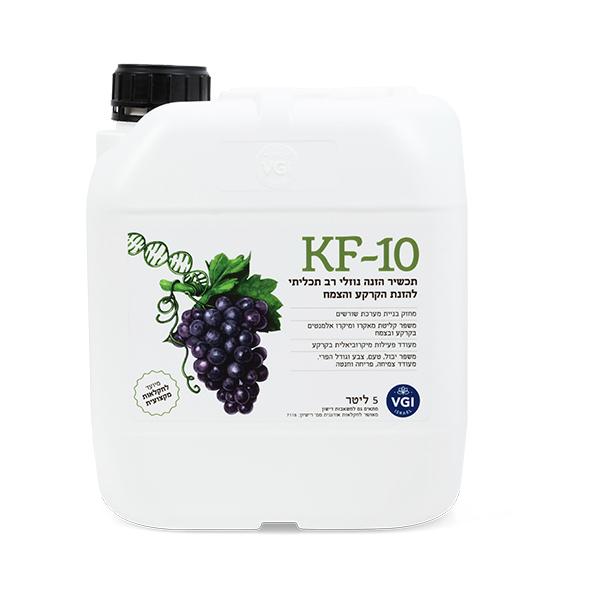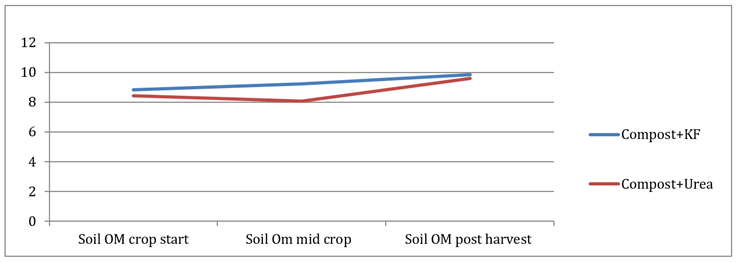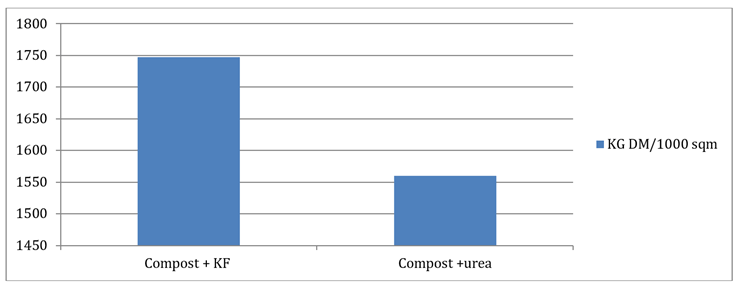Yevul Sih February 2023 • Issue 199
Hagai Raban, Agricultural Development Manager, VGI Israel
VGI Israel has been engaged in developing environmentally friendly biostimulants for over three decades, as well as the development of new application methods intended to ensure optimal crop growth whi
le relying as little as possible on chemical fertilization. Lately there has been much discussion about regenerative agriculture, trading carbon credits, and their connection to fertilization practices and soil fertility management. This article will attempt to clarify these concepts and demonstrate how the application of biostimulants in agriculture can contribute not only to increasing crop yields but also to reducing the need for chemical inputs that contribute to greenhouse gas emissions, in addition to improving the profit potential for growers trading in carbon credits.
What is Regenerative Agriculture?
“Regenerative Agriculture” is a relatively new term, coined in the early 2000s. The pioneers of this approach drew their inspiration from Allan Savory, the Zimbabwean researcher who spent many years seeking ways to manage the extensive savannas of southern Africa in order to prevent land degradation. He developed a method that proved to be effective in restoring the land and slowing desertification processes. Savory’s method, based on controlled livestock grazing, led over time to an increase in the proportion of soil organic matter, reduced soil erosion, and the development of microorganism populations. Gradually, the soil’s capacity to support plant life increased, as well as the capacity of the entire ecosystem to support larger livestock populations.
Savory’s methods and work have had a significant impact in agricultural regions worldwide that are dominated by livestock grazing: the Midwest USA, Australia, and southern Africa. Over time, the term “Regenerative Agriculture” was coined to describe these systems, which are essentially based on the recognition that agriculture is a multifunctional ecological system, in which each individual component effects the whole and fertile, living soil is the vital foundation of a stable, healthy food web. This recognition echoes the principles on which Organic and Biodynamic Agriculture are based: understanding the entire agricultural system, with soil at its center, as a living organism.
However, unlike Organic and Biodynamic Agriculture, those engaged in Regenerative Agriculture do not subject their activities to a strict set of standards and regulations, but instead aim to comply with several basic practical principles in order to increase soil fertility and the proportion of soil organic matter:
Regenerative Agriculture, Carbon Sequestration & Greenhouse Gas Emissions
“Greenhouse gases” is a general name for the gaseous compounds that are present in the atmosphere and prevent heat waves from the Earth being radiated back into space. A balanced concentration of these greenhouse gases is essential for maintaining a stable temperature and supporting life on Earth. However, when the concentration becomes too high, it leads to global warming and appears to also accelerate climate change processes, some of which are destructive. The primary greenhouse gas is carbon dioxide, but it is not the only one, as we will see below.
The Earth’s soil stores about 1,700 gigatons of organic carbon. This makes it the largest carbon reservoir in the biosphere: twice the amount of carbon in the atmosphere, four times the amount of carbon stored in vegetation, and 160 times the total amount of carbon emitted into the atmosphere every year due to human activity. In soil, we find the dynamic process of carbon sequestration (or storage) and its release into the atmosphere. During photosynthesis, plants bind atmospheric carbon to organic compounds, and this is how carbon reaches the soil. Carbon makes up 58% of soil organic matter, so land management and agricultural methods have immense significance and influence on the global carbon economy. On the one hand, agricultural methods that involve intensive plowing and deep tillage contribute to the accelerated decomposition of organic matter and release of carbon into the atmosphere. On the other hand, methods that apply the Regenerative Agriculture principles described above support the build-up of carbon within the soil as plants pull carbon from the atmosphere and sequester it into stable organic compounds in the soil.
 As mentioned previously, carbon dioxide is not the only greenhouse gas associated with agricultural activity. One molecule of methane is equivalent to 23 molecules of carbon dioxide in terms of generating a greenhouse effect. Methane is often associated with raising livestock and handling animal manure. Other gases are nitrogenous compounds emitted from the soil under anaerobic conditions and due to excess fertilization combined with plowing. According to accepted science, 1 kg of nitrogen oxide emitted into the atmosphere is equivalent to 300 kg of carbon dioxide, in terms of creating a greenhouse effect. In light of this fact, together with the knowledge that excess nitrogen fertilization degrades soil organisms with a natural ability to bind atmospheric nitrogen to organic compounds, reducing chemical fertilization and specifically nitrogen fertilization is now known to have great importance when developing Regenerative Agricultural methods.
As mentioned previously, carbon dioxide is not the only greenhouse gas associated with agricultural activity. One molecule of methane is equivalent to 23 molecules of carbon dioxide in terms of generating a greenhouse effect. Methane is often associated with raising livestock and handling animal manure. Other gases are nitrogenous compounds emitted from the soil under anaerobic conditions and due to excess fertilization combined with plowing. According to accepted science, 1 kg of nitrogen oxide emitted into the atmosphere is equivalent to 300 kg of carbon dioxide, in terms of creating a greenhouse effect. In light of this fact, together with the knowledge that excess nitrogen fertilization degrades soil organisms with a natural ability to bind atmospheric nitrogen to organic compounds, reducing chemical fertilization and specifically nitrogen fertilization is now known to have great importance when developing Regenerative Agricultural methods.
Carbon Credit Trading & Biostimulants as Potential Profit Sources for Growers
Trade in carbon credits is a global market mechanism designed to encourage reduced greenhouse gas emissions into the atmosphere in two main ways:
To identify the carbon footprint of every process and product within production systems and global supply chains, and take steps to reduce that footprint, by encouraging a move towards products and energy sources that do not depend on burning fossil fuels.
To enable commercial entities whose economic activity involves high greenhouse gas emissions (i.e., a negative carbon footprint) to balance their harmful ef
fect on the atmosphere by paying companies that can prove that their activity has a positive carbon footprint – in other words, that they remove greenhouse gases from the atmosphere and stably sequester those gases into the marine or terrestrial environment.
The mechanism for carbon credit trading is rooted in international trade agreements, in which countries require large polluters to purchase carbon credits in order to balance out their harmful impact on the environment. In addition to regulatory factors, increasing global awareness of the need to slow down climate change and global warming processes is motivating businesses to seek solutions to their polluting activities, as part of their general ESG policy. With the increasing demand for carbon credits, many diverse business initiatives have sprung up in recent years that are concerned with pulling greenhouse gases from the atmosphere and storing them within stable organic compounds, via either technological means or natural mechanisms. In order to regulate carbon credit trading, trading exchanges have been created that are subject to certain standards and define the eligibility criteria for these credits.
The reasons reviewed in the previous section explain why the soil is one of the most interesting natural environments in terms of carbon credits. In recent years, many initiatives have emerged to preserve and restore areas of natural vegetation, with the aim of increasing the amount of carbon in its soils. Many farmers also view carbon credits as a potential source of additional income from their agricultural activities, and are therefore showing growing interest in the principles and methods of Regenerative Agriculture. In order for farmers to gain carbon credits, they must demonstrate and prove that their entire agricultural production activity creates a positive carbon balance: the amount of carbon accumulated within the soil over a certain time period is greater than the total greenhouse gas emissions from that activity. Here, it is necessary to consider not only the carbon emitted from the soil, but also, and primarily, the carbon price of every activity and product: fuel for tractors and other vehicles, water (which requires energy to use), as well as fertilizers, the production and transportation of which involves the investment of substantial energy, and its excess use resulting, as explained earlier, in the emission of greenhouse gases into the atmosphere. The carbon price of one liter of diesel fuel is equivalent to approximately 1 kg of atmospheric carbon. That is, in order to balance the consumption of one liter of diesel, we must sequester 1 kg of carbon into the soil. The carbon price of one kilogram of nitrogen fertilizer is higher – between 0.9 and 1.8 kg of carbon, depending on the fertilizer type. The carbon price of pesticides is even higher than that, in some cases reaching more than 10 kg of carbon per kg of pesticide. However, farmers tend to use smaller volumes of pesticides than fertilizer per defined area. So, it can be seen that in order
to improve the carbon balance, farmers should address two main challenges:
Developing soil management practices that are as economical as possible in terms of fuel and energy, which will prevent carbon emissions into the atmosphere (no-till farming, avoiding plowing of the soil).
Developing crop nourishment and soil fertility methods that will reduce dependence on chemical fertilizers and pesticides, while maintaining the plants’ optimal ability to perform photosynthesis and bind atmospheric carbon into their tissues.
The use of biostimulants presents an interesting alternative for farmers wishing to implement Regenerative Agriculture principles, reduce dependence on chemical fertilizers, and create an additional income source from selling carbon credits. In addition, the production of chemical fertilizers (especially nitrogenous fertilizers) involves the investment of extensive energy and the emission of greenhouse gases. Excess chemical fertilization encourages nitrate emission into the atmosphere and has additional negative effects on soil fertility, the natural environment, and biodiversity:
VGI Israel is a world pioneer in the development and production of biostimulants for enhanced crop growth. These products are based on various algae and plant extracts, and a relatively small amount – a few liters per 1,000 sqm during the growing season – is sufficient to support and improve the plant’s ability to produce crops.
In recent years, VGI has conducted various studies and experiments that demonstrate that, when biostimulants are used accurately, the use of mineral fertilizers can be significantly reduced and commercial crops can be achieved at levels that sometimes even exceed those obtained with chemical fertilization alone. These studies also demonstrate the importance of using biostimulants within the Regenerative Agriculture method, and the potential for generating additional profit from carbon credits. Below are several examples (detailed reports on these studies are available for review at any time on the VGI website at www.vgi.co.il):

Fig. 1: Variation in Organic Matter Levels during Corn Cultivation, KF Fertilizer vs. Chemical Fertilizer

Fig. 2: Dry Matter Yield When Treating with Compost + KF vs. Compost + Chemical Fertilizer

During the 2021-2022 growing season, growers in Israel and all over the world experienced a dramatic increase in fertilizer prices. A number of farmers were willing to take up the gauntlet, give up a significant percentage (in some cases over 40%) of their chemical fertilizer share, integrate VGI biostimulants into their growing process and apply them in accordance with the company’s recommendations. These growers, from the avocado, almond, and citrus sectors, were successful during this last season, as they enjoyed a good harvest, supported tree resilience and soil fertility, and saved on unnecessary expenses.
The writer has a master’s degree in Environmental Studies and Sustainability, and is a grower active in applying biostimulants as well as practicing Organic and Regenerative Agriculture methods for over 3 decades.